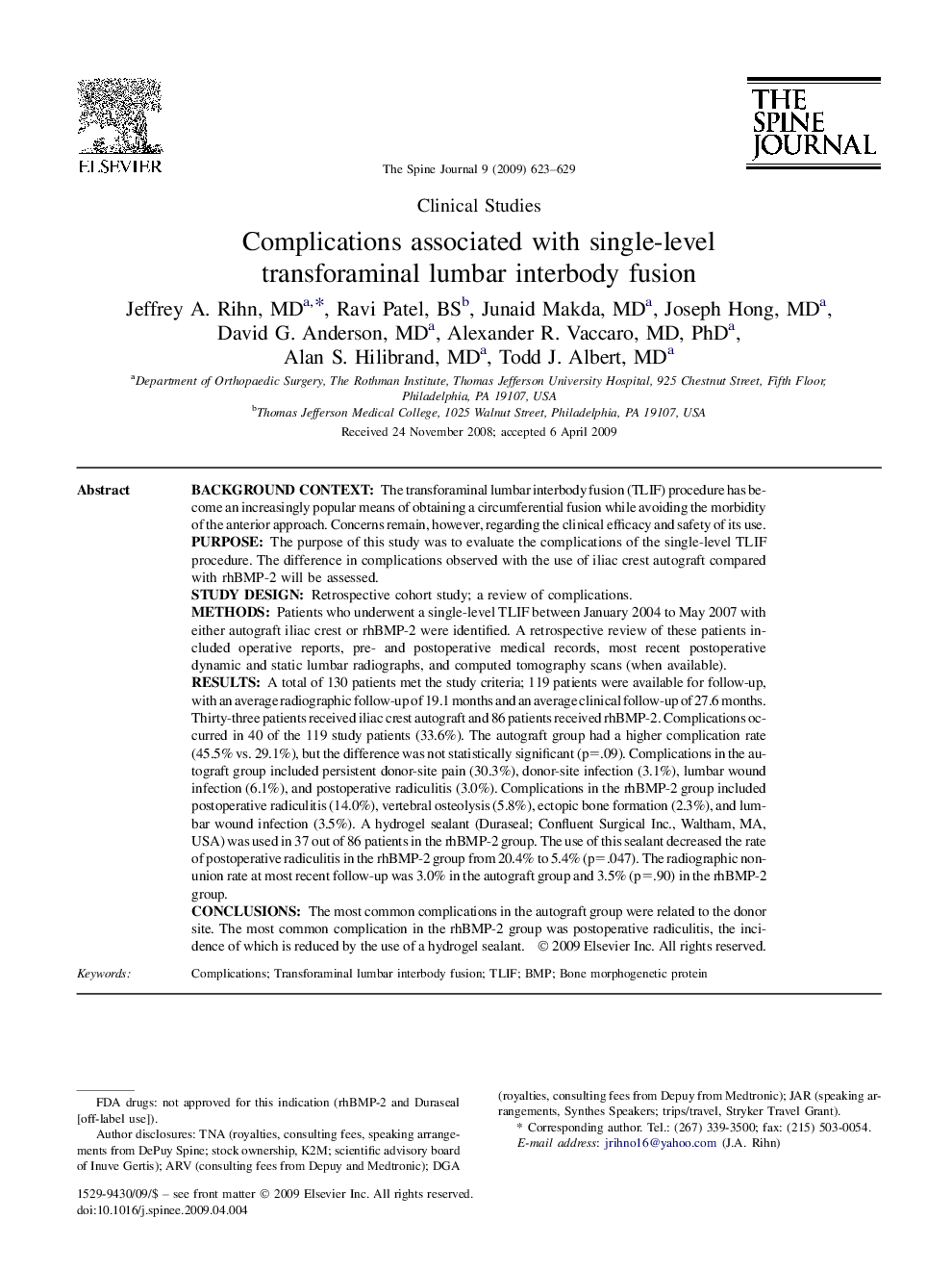| کد مقاله | کد نشریه | سال انتشار | مقاله انگلیسی | نسخه تمام متن |
|---|---|---|---|---|
| 4099750 | 1268655 | 2009 | 7 صفحه PDF | دانلود رایگان |

Background contextThe transforaminal lumbar interbody fusion (TLIF) procedure has become an increasingly popular means of obtaining a circumferential fusion while avoiding the morbidity of the anterior approach. Concerns remain, however, regarding the clinical efficacy and safety of its use.PurposeThe purpose of this study was to evaluate the complications of the single-level TLIF procedure. The difference in complications observed with the use of iliac crest autograft compared with rhBMP-2 will be assessed.Study designRetrospective cohort study; a review of complications.MethodsPatients who underwent a single-level TLIF between January 2004 to May 2007 with either autograft iliac crest or rhBMP-2 were identified. A retrospective review of these patients included operative reports, pre- and postoperative medical records, most recent postoperative dynamic and static lumbar radiographs, and computed tomography scans (when available).ResultsA total of 130 patients met the study criteria; 119 patients were available for follow-up, with an average radiographic follow-up of 19.1 months and an average clinical follow-up of 27.6 months. Thirty-three patients received iliac crest autograft and 86 patients received rhBMP-2. Complications occurred in 40 of the 119 study patients (33.6%). The autograft group had a higher complication rate (45.5% vs. 29.1%), but the difference was not statistically significant (p=.09). Complications in the autograft group included persistent donor-site pain (30.3%), donor-site infection (3.1%), lumbar wound infection (6.1%), and postoperative radiculitis (3.0%). Complications in the rhBMP-2 group included postoperative radiculitis (14.0%), vertebral osteolysis (5.8%), ectopic bone formation (2.3%), and lumbar wound infection (3.5%). A hydrogel sealant (Duraseal; Confluent Surgical Inc., Waltham, MA, USA) was used in 37 out of 86 patients in the rhBMP-2 group. The use of this sealant decreased the rate of postoperative radiculitis in the rhBMP-2 group from 20.4% to 5.4% (p=.047). The radiographic nonunion rate at most recent follow-up was 3.0% in the autograft group and 3.5% (p=.90) in the rhBMP-2 group.ConclusionsThe most common complications in the autograft group were related to the donor site. The most common complication in the rhBMP-2 group was postoperative radiculitis, the incidence of which is reduced by the use of a hydrogel sealant.
Journal: The Spine Journal - Volume 9, Issue 8, August 2009, Pages 623–629